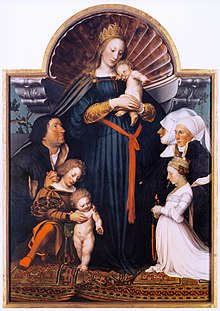YouTube上的俄文電影不少片,有的稍細,比較忠於原著,有的大而化之,譬如說有英文字幕的
https://www.youtube.com/watch?v=qn8G-RYyfrM
PART I
維基百科,自由的百科全書
白癡(俄語:Идиот)是俄國作家費奧多爾·杜斯妥也夫斯基的長篇小說。杜斯妥也夫斯基從1867年開始創作這部小說。1868年1月開始在《俄羅斯信使》上連載到1869年2月。小說反映了一八六一年改革之後俄國社會的各個方面,突出批評了社會道德的墮落、宗教信仰的蛻變和知識分子的虛無主義思想,塑造了梅什金公爵這個理想化的典型[1]。
目錄
1故事
2引用
3內部連結
4參考資料
故事[編輯]
主角梅什金公爵(Prince Lev Nikolayevich Myshkin)是作家杜氏理想的一個基督式的人物,純潔、善良、坦率,充滿悲天憫人的胸懷。靠富商帕夫列謝夫的接濟,主角前往瑞士治療癲癇症,他到葉潘欽(Yepantchin)將軍家,被心胸狹隘的加尼亞罵:「真是個白癡!」他不斷寬容了加尼亞、羅戈任(Rogozhin)等人,加尼亞在懺悔後,依舊想要強娶納斯塔霞·菲裏波芙娜。羅戈任也始終把納斯塔霞看作己物,最後殺死她。梅什金公爵因他的同情和憐憫,同時毀了兩個女性,納斯塔霞嫁給羅戈任,幾次逃家,最後落得毀滅的悲慘結局,阿格拉婭(Aglaya)最後絕望,皈依天主教。梅什金公爵最後變成白痴,因為他發現基督的愛對於這個世界毫無作用。
引用[編輯]
夏志清在評論《紅樓夢》時,引用了杜斯妥也夫斯基的《白痴》(The Idiot)中的梅什金公爵與賈寶玉相提並論。
HC: 黃武雄提出《小王子》對比
內部連結[編輯]
白痴 (1951年電影):日本導演黑澤明曾改編小說,搬上大螢幕。
維基文庫中相關的原始文獻:
白痴
參考資料[編輯]
^ 杜斯妥也夫斯基著,臧仲倫譯. 《白痴》,中譯本序. 譯林出版社. 2005.
The Idiot (pre-reform Russian: Идіотъ; post-reform Russian: Идиот, tr. Idiót) is a novel by the 19th-century Russian author Fyodor Dostoevsky. It was first published serially in the journal The Russian Messenger in 1868–69.
The title is an ironic reference to the central character of the novel, Prince (Knyaz) Lev Nikolayevich Myshkin, a young man whose goodness, open-hearted simplicity and guilelessness lead many of the more worldly characters he encounters to mistakenly assume that he lacks intelligence and insight. In the character of Prince Myshkin, Dostoevsky set himself the task of depicting "the positively good and beautiful man."[1] The novel examines the consequences of placing such a unique individual at the centre of the conflicts, desires, passions and egoism of worldly society, both for the man himself and for those with whom he becomes involved.
Joseph Frank describes The Idiot as "the most personal of all Dostoevsky's major works, the book in which he embodies his most intimate, cherished, and sacred convictions."[2] It includes descriptions of some of his most intense personal ordeals, such as epilepsy and mock execution, and explores moral, spiritual and philosophical themes consequent upon them. His primary motivation in writing the novel was to subject his own highest ideal, that of true Christian love, to the crucible of contemporary Russian society.
The artistic method of conscientiously testing his central idea meant that the author could not always predict where the plot was going as he was writing. The novel has an awkward structure, and many critics have commented on its seemingly chaotic organization. According to Gary Saul Morson, "The Idiot violates every critical norm and yet somehow manages to achieve real greatness."[3] Dostoevsky himself was of the opinion that the experiment was not entirely successful, but the novel remained his favourite among his works. In a letter to Strakhov he wrote: "Much in the novel was written hurriedly, much is too diffuse and did not turn out well, but some of it did turn out well. I do not stand behind the novel, but I do stand behind the idea."[4]
Contents
1Background
2Plot summary
2.1Part 1
2.2Part 2
2.3Part 3
2.4Part 4
3Characters
3.1Major characters
3.2Other characters
4Themes
4.1Atheism and Christianity in Russia
4.1.1Catholicism
4.2Innocence and guilt
4.3Autobiographical themes
4.3.1Capital punishment
4.3.2Epilepsy
4.4Mortality
5Style
5.1Temporality
5.2Carnivalization
5.3Polyphony
5.4Narrator and author
6Reception
7English translations
8Adaptations
9References
10External links
English translations[edit]
值得思考比較的英文本:
Since The Idiot was first published in Russian, there have been a number of translations into English over the years, including those by:
Frederick Whishaw (1887)
Constance Garnett (1913) Revised by Anna Brailovsky (2003)
Eva Martin (1915)
David Magarshack (1955)
John W. Strahan (1965)
Henry Carlisle and Olga Carlisle (1980)
Alan Myers (1992)
Richard Pevear and Larissa Volokhonsky (2002)
David McDuff (2004)
Ignat Avsey (2010)
The Constance Garnett translation was for many years accepted as the definitive English translation, but more recently it has come under criticism for being dated. The Garnett translation, however, still remains widely available because it is now in the public domain. Some writers, such as Anna Brailovsky, have based their translations on Garnett's. Since the 1990s, new English translations have appeared that have made the novel more accessible to English readers. The Oxford Guide to Literature in English Translation (2000) states that the Alan Myers version is the "best version currently available".[75] Since then, however, new translations by David McDuff and Pevear & Volokhonsky have also been well received.
台灣遠景以前有印 耿濟之譯本 世界文學全集 62 1977初版,1988年第6版。
2020年4月4日 星期六
Fyodor Dostoyevsky 白痴 Darmstadt Madonna, with donor portraits, on a Holbein carpet. 1525–26 and 1528.
费.陀思妥耶夫斯基全集. 第9-10卷, 白痴 / 陈燊主编 ; 张捷, 郭奇格译 no.1 Dostoyevsky, Fyodor,
p.101
"您臉上有一種特殊的神情,就像收藏在德累斯頓的霍爾拜因畫的那幅聖母像。這就是我對您面相的看法。"
费.陀思妥耶夫斯基全集. 第9-10卷, 白痴 / 陈燊主编 ; 张捷, 郭奇格译

Darmstadt Madonna, with donor portraits, on a Holbein carpet. 1525–26 and 1528. Oil and tempera on limewood, Würth Collection, Schwäbisch Hall.

沒有留言:
張貼留言